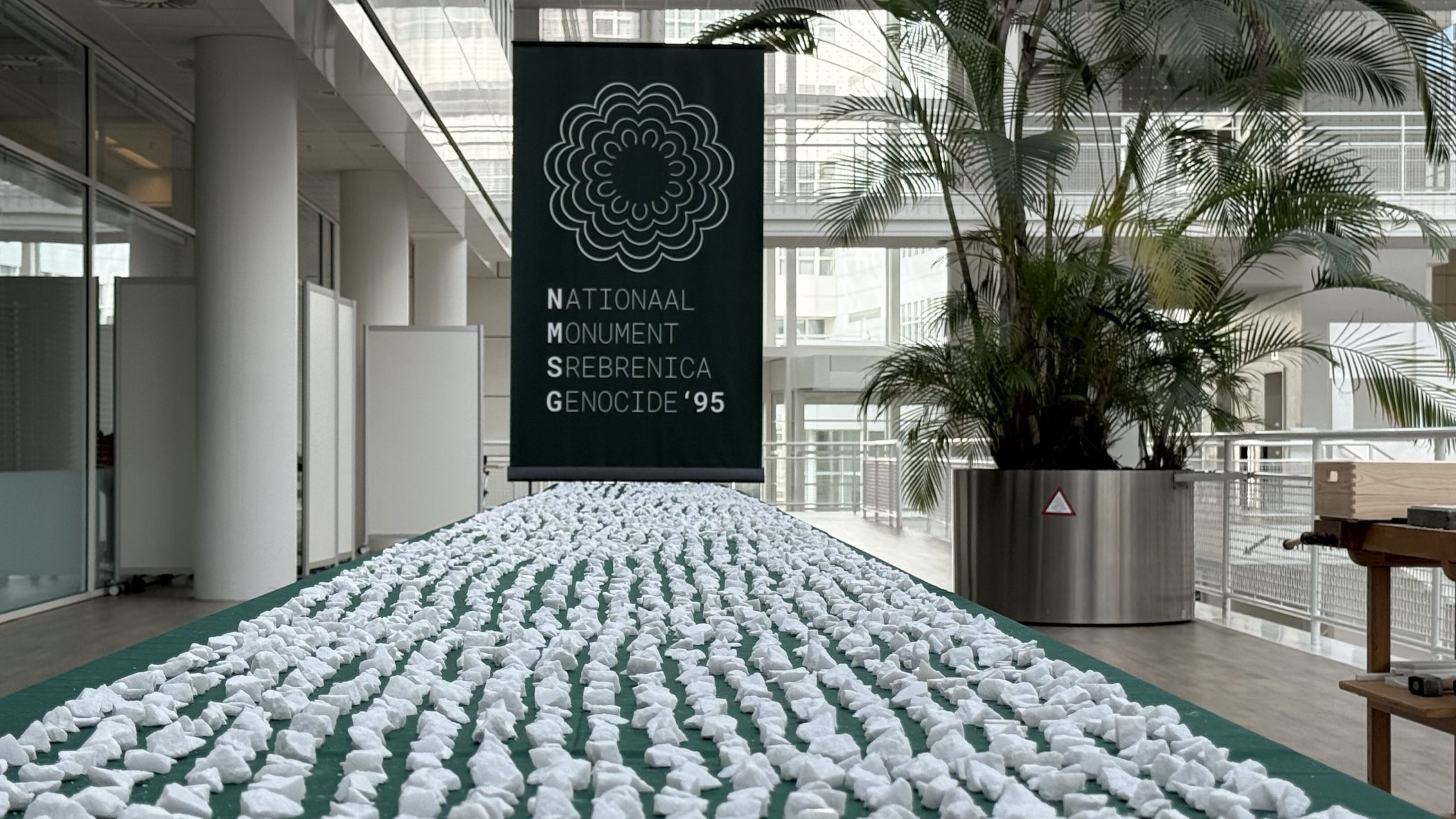This post is also available in: Bosnian
On July 11, the 30th anniversary of the Srebrenica genocide, the first step towards a Dutch national monument commemorating the Srebrenica genocide victims will be unveiled in the square in front of the building that once housed the International Criminal Tribunal for the Former Yugoslavia.
The ‘commemorative place-marker’ for the national monument will consist of fragments of white limestone left over from the making of headstones for the Srebrenica Memorial Centre, where thousands of victims of the genocide are buried. The stone was brought specially from Bosnia and Herzegovina and a total of 8,372 pieces will symbolise each victim.
The place marker is intended to be a place of remembrance and is needed now because the older generation of genocide survivors is passing away, said Sandra Pudja of the Foundation National Srebrenica Genocide Monument ’95.
“It took quite a while to get political support for this. I wouldn’t call it obstruction – some politicians and officials have shown real engagement. But overall, we’ve seen a very passive attitude,” said Pudja.
One exception is Jan van Zanen, the mayor of The Hague, who voiced his support in a video message after breaking a piece of stone for the installation himself.
“The Hague, the international city of peace and justice, places great importance on establishing a monument to commemorate the Srebrenica genocide. A monument that keeps the memory of this tragedy alive- and reminds us that war criminals were held accountable before the Yugoslavia tribunal here in The Hague,” van Zanen said.
Sabina Tanovic of Designing Memory, a studio specialising in memorial architecture, which advised on the installation, said that the process of breaking up the stones was important because it turned it into a collective creation.
“All 8,372 broken fragments will be part of the place-marker,” said Tanovic. “Additionally, symbolic stones embedded in the ground will form a timeline, counting the years without a permanent monument. Each year that agreement on a permanent location remains elusive, a new stone will be added.”
“This site marker is only the first step, because creating a definite national monument is a much more complex process,” Pudja said.
Plans are also being developed for a Srebrenica knowledge institute and research centre in The Hague, which could also serve as a museum. The preferred location is the former Hague Tribunal building, due to its historical, emotional and symbolic significance.
The Municipality of The Hague says it supports the realisation of a dignified monument to honour the victims of Srebrenica and provides support where necessary. It has created a task force of city council members to monitor the progress of the national monument and ensure that the momentum continues. But, the city notes, the central government takes the lead, as the former ICTY building is owned by the national government’s real estate agency.
A spokesperson for the Central Government Real Estate Agency, which falls under the Ministry of Health, Welfare and Sport and the Ministry of Spatial Planning, confirmed that various feasibility studies have been conducted. Plans are still being developed, and no final decisions have been made.
“We manage buildings for government use, so the building must remain suitable for future tenants. We need to carefully assess whether a monument out front – or a museum inside – would be practically feasible. We fully understand the wish, but we also have to consider functionality,” the spokesperson said.
The daughter of one survivor said recognition is very important. “It would be good if people at the governmental level also understood what survivors of Srebrenica, now living in the Netherlands, have been through,” she said.
Though the Dutch state has been held legally accountable for the deaths of three men from Srebrenica because of Dutch UN peacekeepers’ failure to save them from death during the genocide in July 1995, and partially responsible for hundreds of others – with compensation paid – the sense among many families is that real recognition is still lacking.
That feeling is only reinforced by how long it took to get approval for a place marker and the ongoing uncertainty about a permanent location.
“I think it’s important to have this place marker, to remind us of what happened,” said Nedim Osmanovic, one of the representatives of Srebrenica survivors in the Netherlands.
